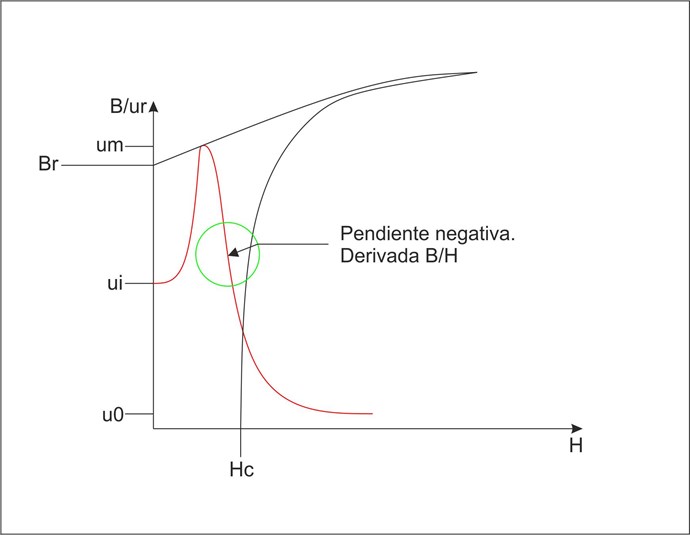@solarlab no worries about being a bit lost, we're working with kind of exotic devices here...
From my point of view ZPM passed the first stage that I call "overunity stage" even if the COP is just 1.1, not as big as I estimated initially based on DC source's readings.
At the end of this stage I think it's appropriate to make a summary and this summary I think would be an answer to your questions.
First, just some background information.
The basic experiment which can provide some information about the phenomenon involved in ZPM is The MrPreva Experiment.
Let's think for a moment about ZPM. Out current physics say this device shouldn't behave like it does. Two asymmetric coils producing opposing magnetic fields which partially annihilate each-other, isn't ? When a pulse is coming on input the smaller coil annihilate half of the magnetic field of the bigger coil (turns ratio is 1:2), isn't ? What's remaining is just half of the magnetic field produced by the bigger coil. Nothing else. According to current physics all what this device should do is to take all the power from the DC source and consume it without any use and the result should be just a small pulsing magnetic field which I doubt would be able to power 2 x 12V/55W light-bulbs like it actually does.
What we actually found is kind of not matching what our current physics says.
While ZPM is able to power (not fully but the light is still very strong) 2 x 12V/55W light-bulbs:
And the test below is with 2 x 12V/35W halogen light bulbs, as a temporary solution to avoid burning the table I put them on a testboard so they don't stay on the table but for now I can't test with them more than 2-3 minutes because for sure the plastic from the testboard will start to melt; the last image shows the luminozity of these two halogen lights when the lights in the room are turned off:
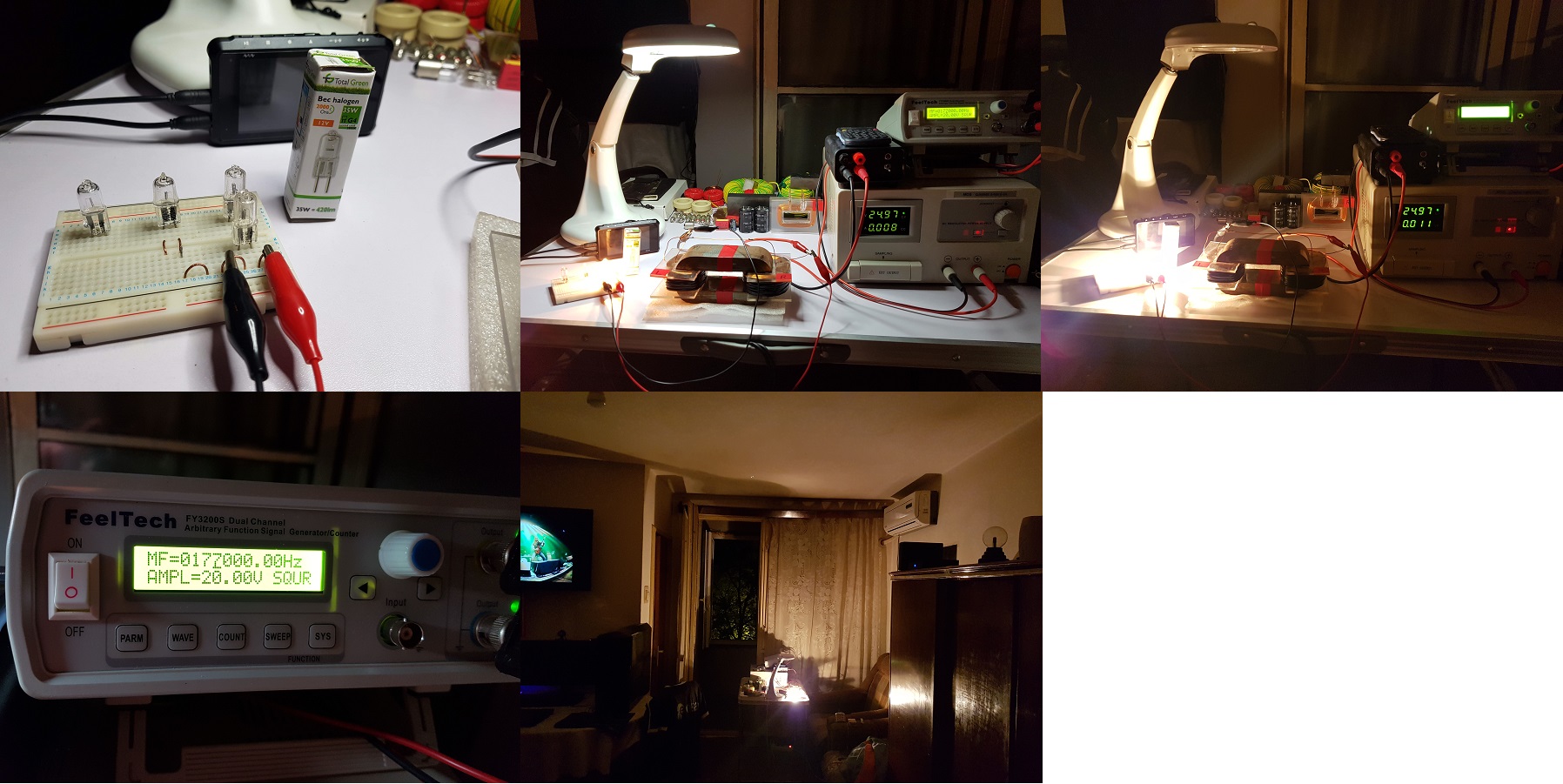
in the same time it "sees" the DC source as another load and is sending power back to it which (in my opinion) may be another explanation of DC source's "confusion" and its readings since a DC source is manufactured just to provide power not to receive power back:
My Friends,
In the below image, we see two numbers with a red line above them:
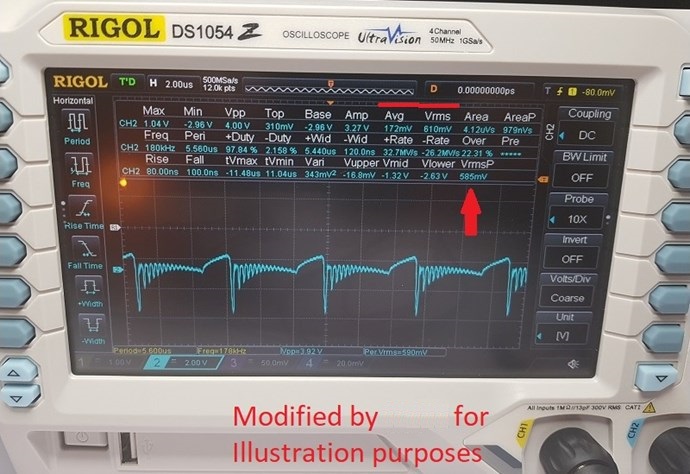
Both numbers are very different! Average or Mean: 172mV and Vrms or Voltage Root Mean Square: 610mV.
Importantly, we have a DC Power Supply! Direct Current meaning one way only! At lease if one is running a Linear Load like a Light Globe!
All Current below the faint turquoise line I have drawn in here:

is Negative Current, its below the Zero Graticule Line of the Probe measuring it.
The Root Mean Square is 610mV across a 0.25 Ohm Resistor, this is approximately: 59.512 Watts input to the ZPM.
At the same time the Scope is saying we have 172mV across a 0.25 Ohm Resistor, this is approximately: 17.082 Watts input the ZPM.
Both figures cant be right! So in this case which one do we trust?
We know Power is coming back at us, the ZPM sees the Source as a Load! The ZPM is trying to Power its load, being the Power Supply.
So what do we have? What are the facts?
- 172mV across a 0.25 Ohm Resistor, 0.688 Amps, approximately: 17.082 Watts input the ZPM.
- 610mV across a 0.25 Ohm Resistor, 2.44 Amps, approximately: 59.512 Watts input to the ZPM.
NOTE: RMS is always positive, it does not give an indication of the direction of power.
Now, I ask others to correct me if I am wrong!
You should use Mean, which is an integration ( Addition ) of the instantaneous power readings ( each sampling point on your screen ) over as many Cycles you have on your screen, which is time, which yields total Energy for this time interval.
This is because your DUT is Non-Linear, and your Source is DC, the DUT sending Power back to Power the DC Source!
With a Linear Load, and an AC Source, you should use RMS most of the time.
What else did we found ?
Well, seems the wave we read on ZPM's output is very similar to what we see on Graham Gunderson's device output (thank you Cd_Sharp for noticing it) which may indicate that his device was using (partially or entirely) a similar concept:
And here it's something which Cd_Sharp noticed, when using the 12W/55W light-bulb the waveform is looking very similar to Graham Gunderson's device waveform:
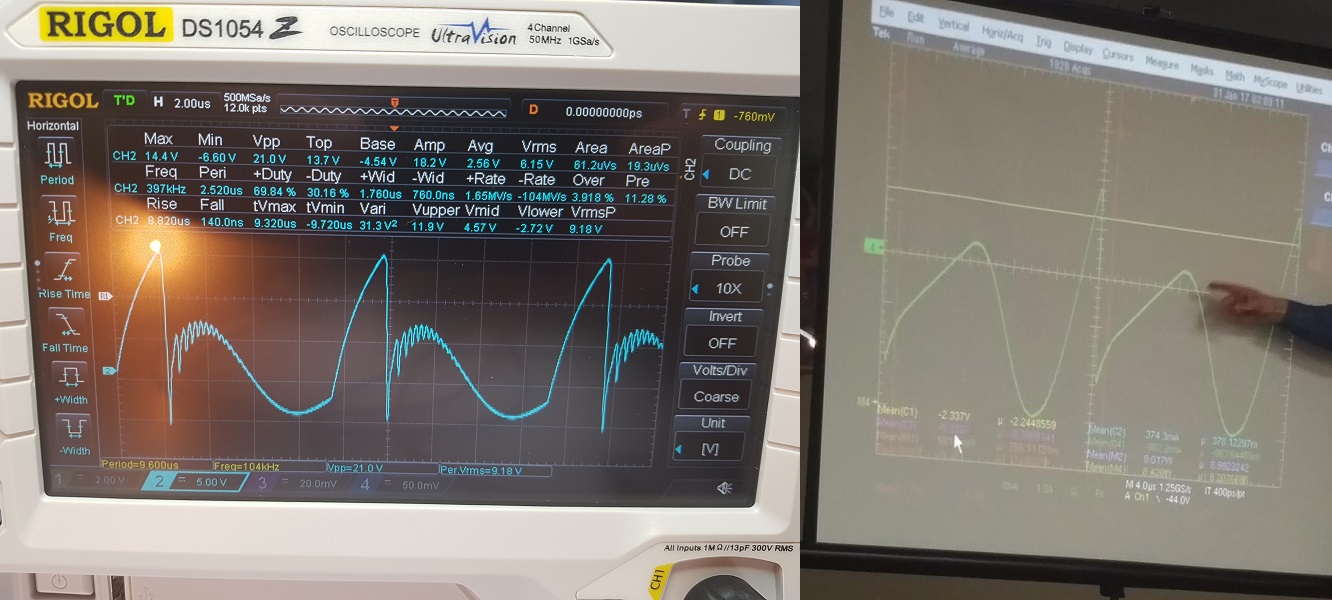
Another thing we found is that on ZPM's output seems to be present some kind of high-frequency standing wave which have some strange effect - there is a 36Vpp voltage difference in the same output wire measured at the point where it's connected to ZPM coil and at another point where (the same wire) is connected to the light-bulb's pin:
Also you remember that before going to vacation I posted here a photo about a anomaly where the device seems to power preferentially the light-bulbs put on its output ? Like in this image where a 12V/5W light-bulb placed directly on device's coils is illuminating stronger than another 12V/5W light-bulb connected after a 12V/55W light-bulb ? This photo:
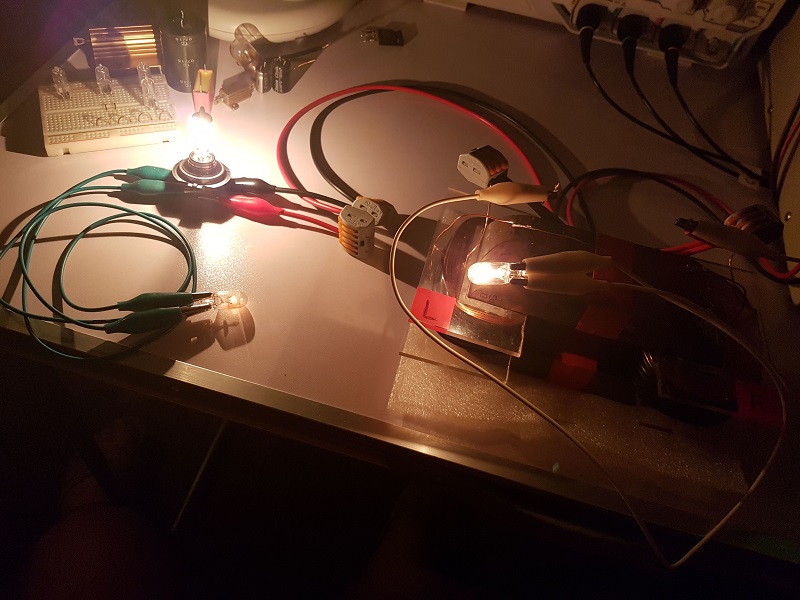
I wanted to see what's going on on the output so I connected one channel from the oscilloscope directly on device's coils and another channel on light-bulb's pins as following:
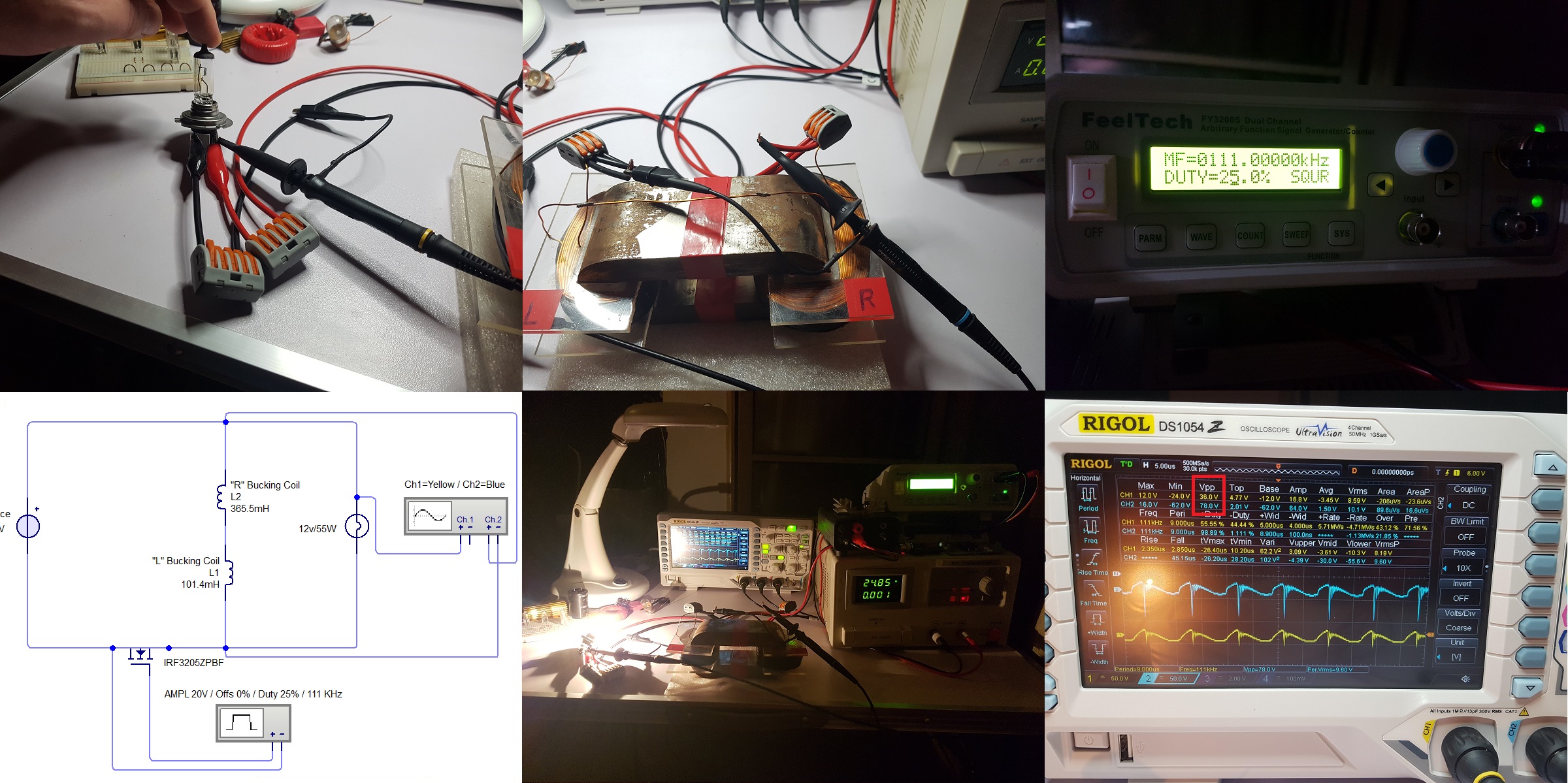
Blue channel is connected directly on ZPM's coils while the yellow channel is connected on the light-bulb's pins.
So I didn't measured the current but I measured the voltage only. As you can see (marked with red rectangle on the image of the oscilloscope's screen) on the same wire there is a Vpp difference of 36 volts between its beginning and its end. I didn't knew it's possible to have voltage difference in the same wire when its length is just 30-40 centimeters.
The only explanation I can find about this anomaly is related to those mysterious standing waves as Vidura noticed:
Hey Fighter and all, The effect that the light bulbs on different connected points (or different wire length) have unequal luminosity is a sign for standing waves at high frequencies. Comparable with Tesla's experience when he shorted a transmission line at one point with a thick copper bar and had at another point of the line light bulbs lit.
Well, maybe I missed something from this (summarized as short as possible) ZPM presentation but I think it provides a general idea of what we're dealing with.
I don't know about you but while experimenting with ZPM I found these anomalies and its behavior strange enough to pursue studying it.
Now the fact that is (even slightly) over-unity (COP 1.1) in my opinion demonstrate that it's worth working on improving it further:
Hey Fighter,
You have my Vote!
Purely Resistive Load, no phase angle to worry about! Figures look good!
Input:
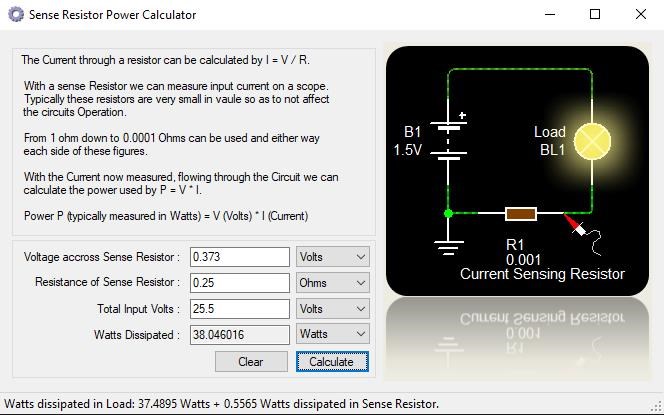
Output:
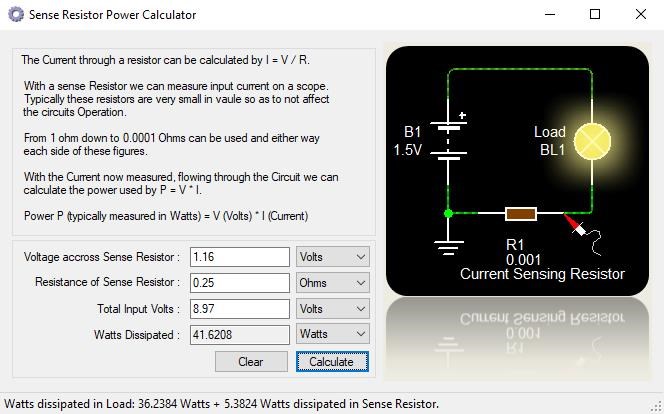
Well done! Good work Fighter!
You have "Generated" a full: 3.574784 Watts above your Input for a COP: 1.09396
Sorry, I exceeded the 10000 characters limit for a post, I'll create a new post and continue there... 🙂
| "If you want to find the secrets of the universe, think in terms of
energy, frequency and
vibration." |
|
|
Nikola Tesla |









